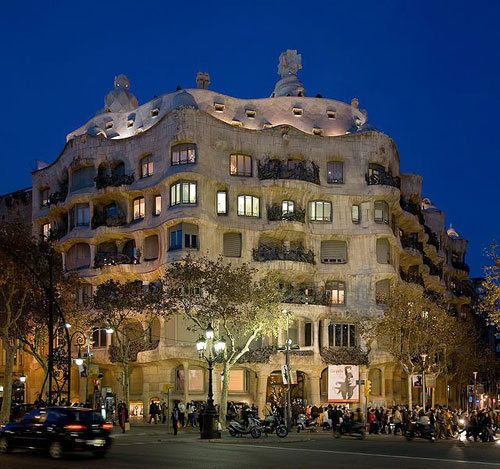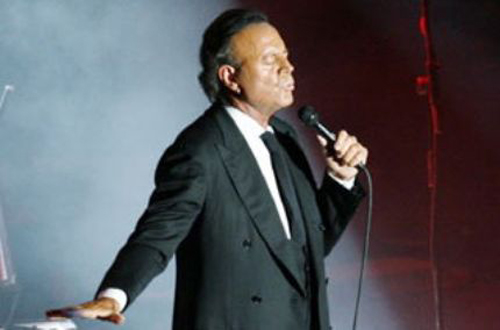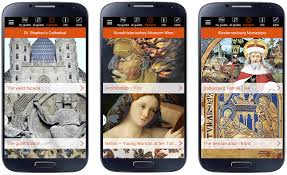ONLY BE BARCELONIAN
Only-Be Barcelonian
Barcelona Cathedral
Barcelona Cathedral started being built in the 13th century and so it´s a world architectural gem that you can´t not visit.
Museum Night in Barcelona
On 14 May, from 7 pm until 1 am, all the museums in Barcelona will be open to art and culture lovers, as well as those of us who may not be in the habit of visiting museums but are interested in enjoying a different kind of night out. La Noche de los Museos en Barcelona (Museum Night in Barcelona) forms part of International Museum Day 2011, established by the International Council of Museums with the slogan ‘Museum and Memory’. This open day seeks to bring people closer to the treasures housed inside each museum, as well as highlighting the importance of the conservation work that is done by these institutions: places that guarantee the preservation and upkeep of our cultural heritage. The word museum comes from the Latin, mus?um, which comes in turn from the Greek, m???????, but if refers to a public or private entity dedicated to conserving, caring for, investigating and exhibiting collections which represent some aspect of human life, whether that be natural history, art, clothing or architecture etc. The concept of the museum has always been linked to the dominant and exclusive vision of a culture. In the past, they were often built to restrict access to the objects they stored, having been designed as places for experts only. However, this has begun to change in recent years with the realization that museums are not places built just for those who work in them, and that they should acknowledge the outside world by helping people to appreciate the culture they house. Museum directors are concerned about the lack of interest shown by much of the public...Ecocity & Industry 2011 in Barcelona
It´s about time that local governments started to worry “more” about the environment. Well, we say “start” – “Go Green” has been on the agenda for over 30 years; and yet we seem to have the same problem, which is that our natural resources are disappearing, and that nothing seems to be able to stop it happening. Ecocity&Industry 2011 brings to the table some questions about the conservation of the environment, and some potential solutions for industry and consumers. This time round, Ecocity presents “Environmental solutions for industry and the city,” held via various installations in the Fira de Barcelona. The proposals are highly innovative – with issues broached such as waste and recycling, water shortage, renewable energies, prevention of labour risks, amongst others. The importance of this event is clear – not only for businesses, but the citizens of Barcelona, and indeed the rest of Spain and Europe.During the previous Ecocity, which was in 2009, there were a total of 160 exhibitors and around 9000 visitors. One of the exclusives of the event was the new Barcelona waste bins, adapted for disabled people, and which will put in use from November 2011. In that case, I wonder how much more time has to pass before the local governments actually put their current ingenious solutions in place. In general, I tend not write about these kinds of things – but it´s genuinely alarming how our cities are treating the environment. Adding to that the ongoing economic crisis, and the general sense of malcontent it has created, our cities will just become poorly mechanisms moving towards an generation of wasteland....Folcore. Electronic music with latin-american rhythm in Barcelona
Music and dance are two elements which have the power to free the spirit – and electronica is one genre which is particularly innovative in this respect. What sets Folcore apart from other emergent groups is that it takes the music of Latin America into the marginal musical communities of Europe. Folcore was born as an audiovisual collective in underground spaces round Barcelona. It´s counter-cultural approach seeks to bring together different rhythms of displaced, alienated communities in the context of the economic crisis, and globalisation which has provoked people to turn to new creative horizons. Aside from the collective´s critical, multicultural approach, they the mix sounds of the cumbia villera, which was born in the marginal neighbourhoods of Argentina,; vallenato colombiano, along with others which merged the styles of reggae, salsa, bailanta, malambo, Brazilian rhythms and Angolan Kuduro. The challenge of transporting electronic music to the ethnic musical landscape, creating new tones and styles in order to provoke an aesthetic, expressive effect has prompted recognition amongst fans and lovers of electronic music and dance in Barcelona. The special thing about this type of music is its roots – most of which are variations of music styles which grew out of poor areas, where delinquency and cultural resistance were channeled into dance. Latin America has proved the fertile ground on which to express social phenomenon through music – in the 60s and 70s there was a surge in protest music, which took traditional sounds to articulate reactions to the political changes of the revolution. The 80s were marked by the Nueva Trova born in Cuba, which adapted itself to the...MACBA & Narrative Parallels in Barcelona
From the 14th of May, MACBA presents exhibition Museo de las Narrativas Paralelas, commissioned by Zdenka Badovinac and Bartomeu Marí. It is the first to be organised by The International, which is an initiative formed by five European museums, in 2009, of over 40,000 works. The show compiles one hundred pieces from the Galerija Museum of Modern Contemporary Art in Slovenia, in participation with the Bratislava Julius Koller Society Museum, Van Abbemuseum, de Eindhoven Museum van Edendaagsen Kunst, de Amberes, and MACBA in Barcelona. This interesting exhibition attempts to question the existing narratives in art, in which western area of Europe has implemented a series of aesthetically acceptable rules; ignoring the important creative processes taking place in the ex-Soviet Union – two parallel creative processes which did not meet. Despite the creative richness which arose from the complex political climate, many Eastern European artists are practically unknown, along with their work. During the 70s and 80s there took place interesting experimentation with the notion of the body amongst artists in Eastern Europe, who challenged and questioned the social, political and philosophical norms, denouncing the banality of power, and the irrationalities of the Soviet communist regime. It was a kind of aesthetic which confronted power through the use of the body as a liberator. Amongst these artists were Czechs Pert Stembera and Jan Mlcoch, who made installations using their bodies as a comment on the socio-political reality, deliberately subjecting themselves to physical danger and violence. Stembera started out as a painter in 1966, before moving to Paris after the events of 1968 and experimenting with self-inflicted experiments, such as going...Julio Iglesias in Barcelona, I love you I hate you
Let´s see. Let´s see. How do I start writing about someone who, in spite of; every effort, all the Black Metal you’ve ever heard, all the drugs you consumed, all the countries you´ve visited, all people you’ve met and all books and statements you’ve read, un-fortunately, has shaped your sentimental life for as long as you can remember, because come on, let´s face it, your parents listened to Julio so loud, that the sound winded up at your room. Although, you could probably say that your parents only listened to Triana; were hippies and had the vinyls of the Ramones, you cannot deny that you heard Julio Iglesias and it made you feel a bit more romantic: you didn’t walk, you flew with Julio. Before continuing, let´s review “One day you, one day me” from the classic album Emotions (1979). An energetic, three-minute disco-style song, in which Julio is the Spanish “Travolta”, that made you dance as a wild tigress while wearing your favorite flared trousers and platforms shoes. “You are like that, I´m like you. To love like this, to hate each other, and then to die for love” I love to hate you Julio. But apart of make you dance, he hypnotizes you, try listening to the song wearing headphones, when the girls finish singing the chorus, there is an oscillation effect in the same style of Tangerine Dream, Klaus Schulze or Kluster. And it was the perfect time. If I could do a remix I would raise such effects. Imagine; Julio was not only sexy, he was also cutting edge. Uh? That album also has classics...The Sagrada Familia, Architecture award and Urbanism in Barcelona
In a surprising move, back in February the Barcelona council awarded the annual “Premio de Arquitectura y Urbanismo Ciudad de Barcelona” award, which recognises the best construction of the year, to Antoni Gaudi´s Sagrada Familia – or rather, to the project carried out last year – the continuation of the Catalan architect´s plans, which have been deemed impossible for many years. The decision of the jury – presided over Carlos Ferrater, along with Xavier Monteys, Daniel Giralt Miracle, Zaida Muxí and Mónica Gili – has provoked a controversy. For a group of important architects, and various cultural figures and city-dwellers (who have organised a protest), it is inappropriate to consider the Sagrada Familia a building of 2010. Many believe that the decision of the jury was influenced by pressure from the tourist industry, rather than a fair, group decision – and that the public should have had more of a say in the final outcome. Another criticism has been that the granting of the award to the Sagrada Familia is not only an insult to contemporary Barcelona projects, but also that it gives a message of reactionary bias, characterised by the defense of restorative works – a break with the “neos” (“neo-kitsch“) who are in direct opposition to such types of works; such as for instance that of Museo Can Framis de Poble Neu, which was transformed from an old factory to a new public space, and the winner of last year´s award. The committee has been attacked for favouring remodelled buildings, and “imitation” works over projects which work hard at new, innovative use of materials and space –...Museo de la Ciencia
The Museo de la Ciencia (CosmoCaixa) is one of the most famous in Europe and inside you can enjoy an incredible planetarium amongst other exhibitions.
La Pedrera
La Pedrera (or Casa Milà) is a building in Barcelona which is known worldwide whose architect is Gaudí.
Mercado de la Boquería
La Boquería is the big market in Barcelona: it offers food and quality products. It´s a common place where Spanish people and tourists go.

 English
English Français
Français Deutsch
Deutsch Italiano
Italiano Español
Español







